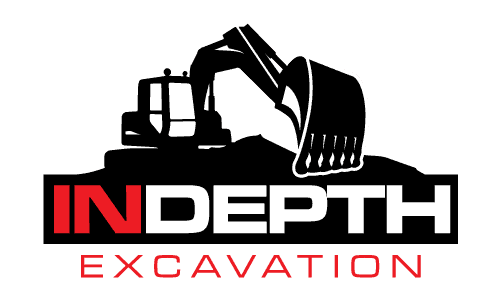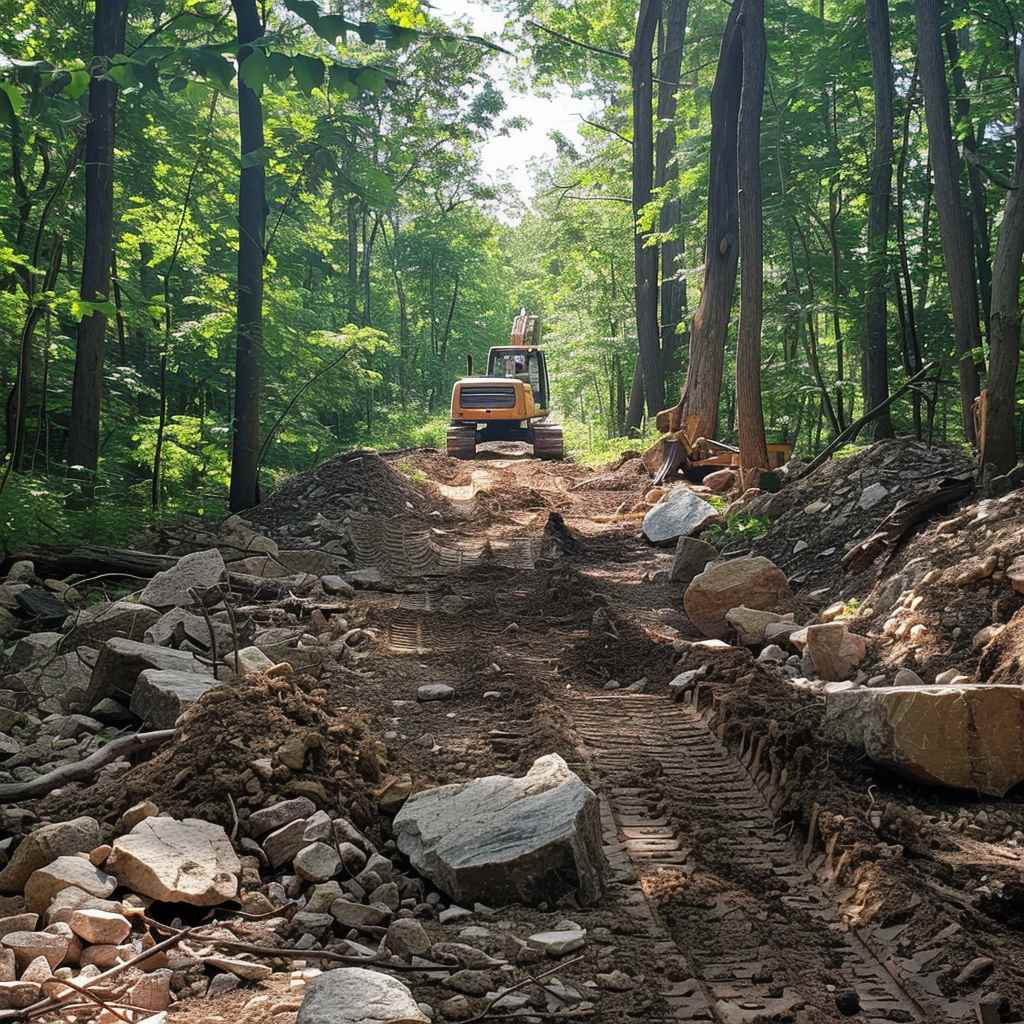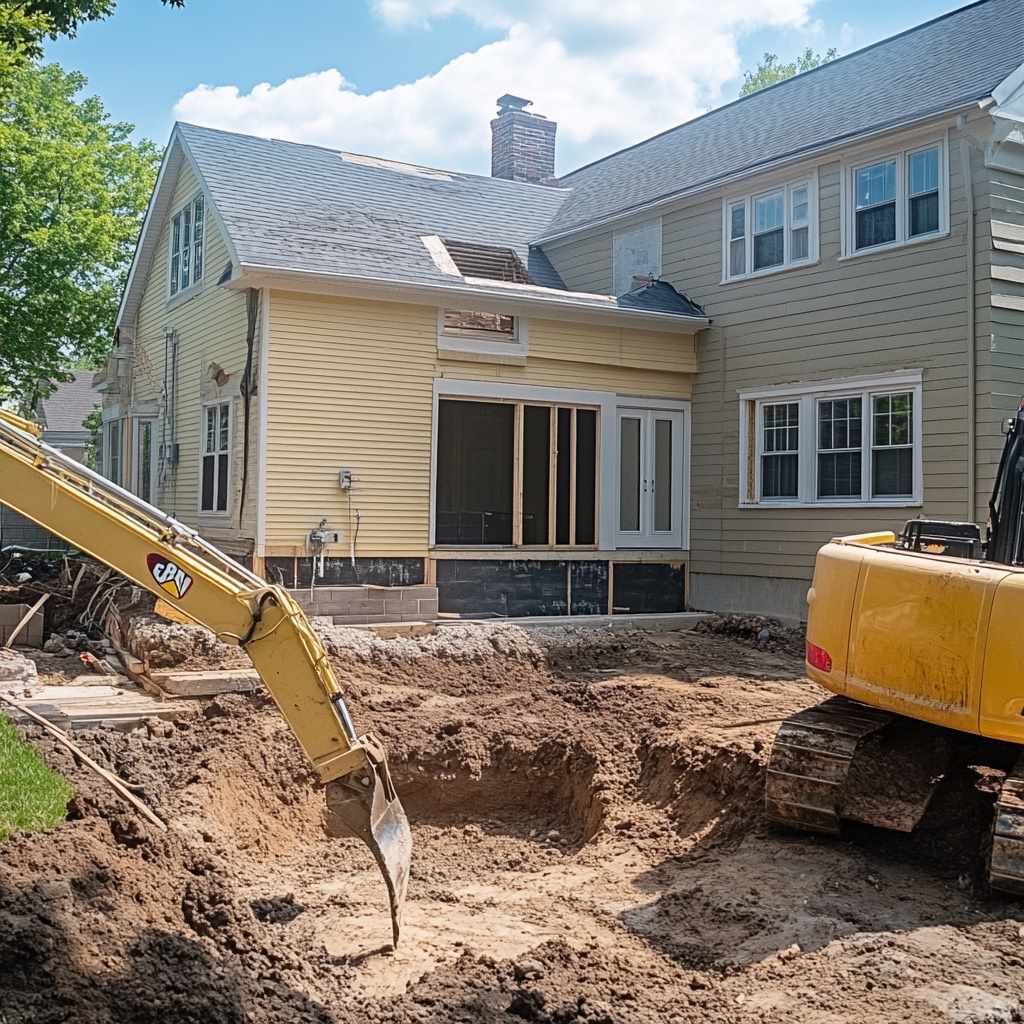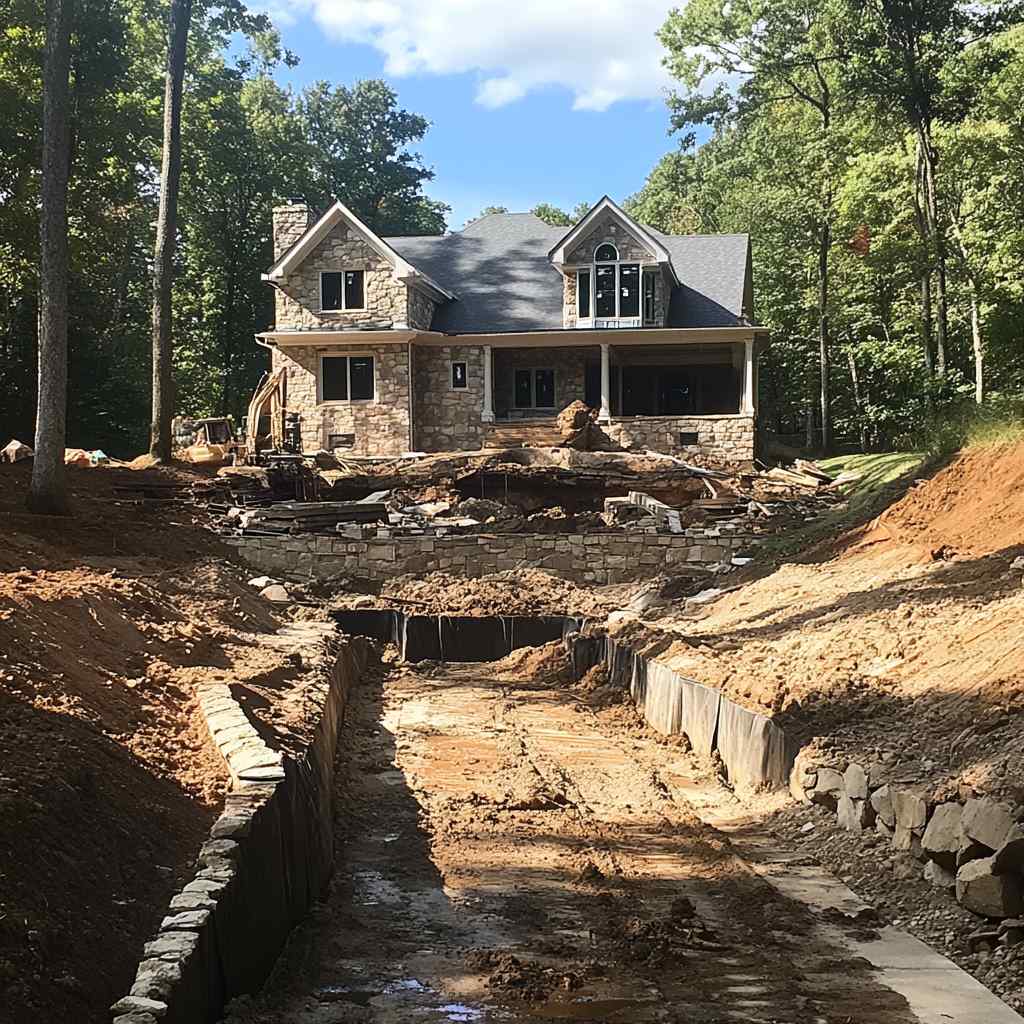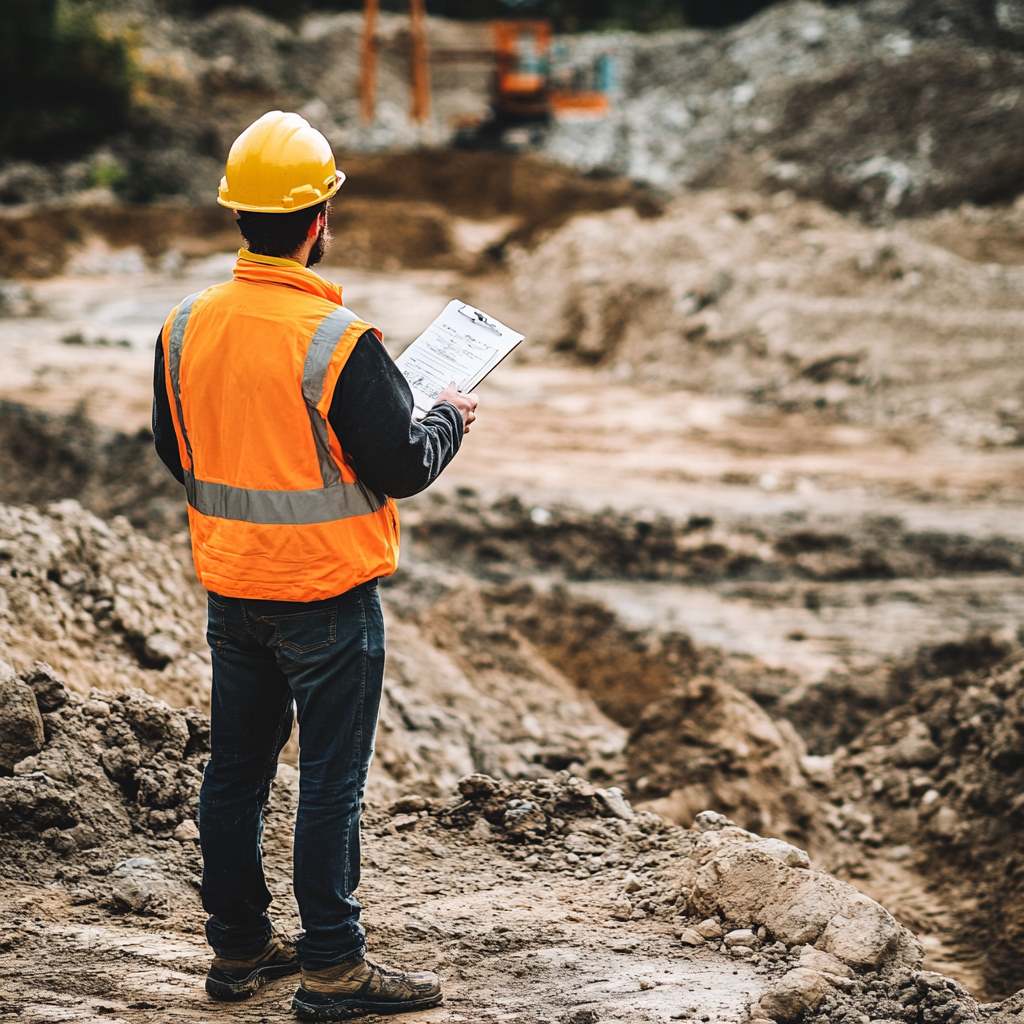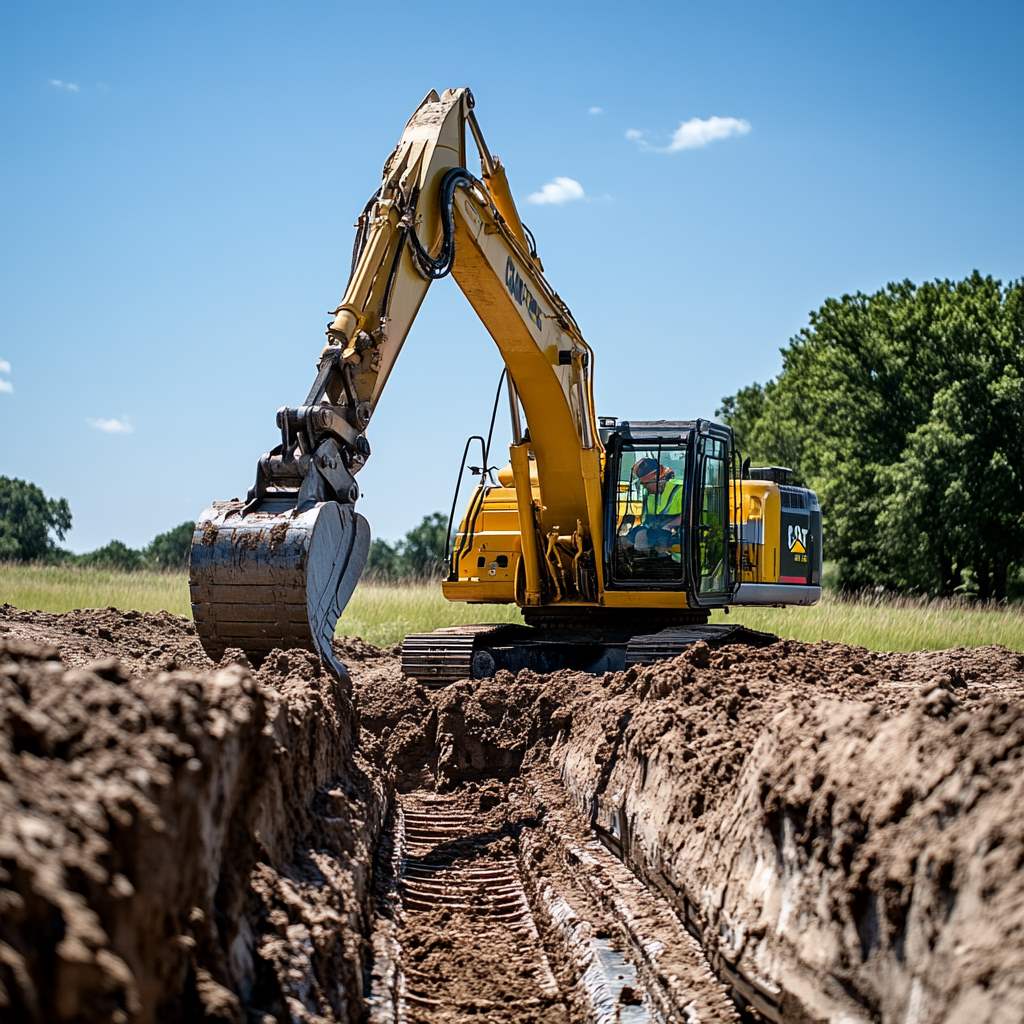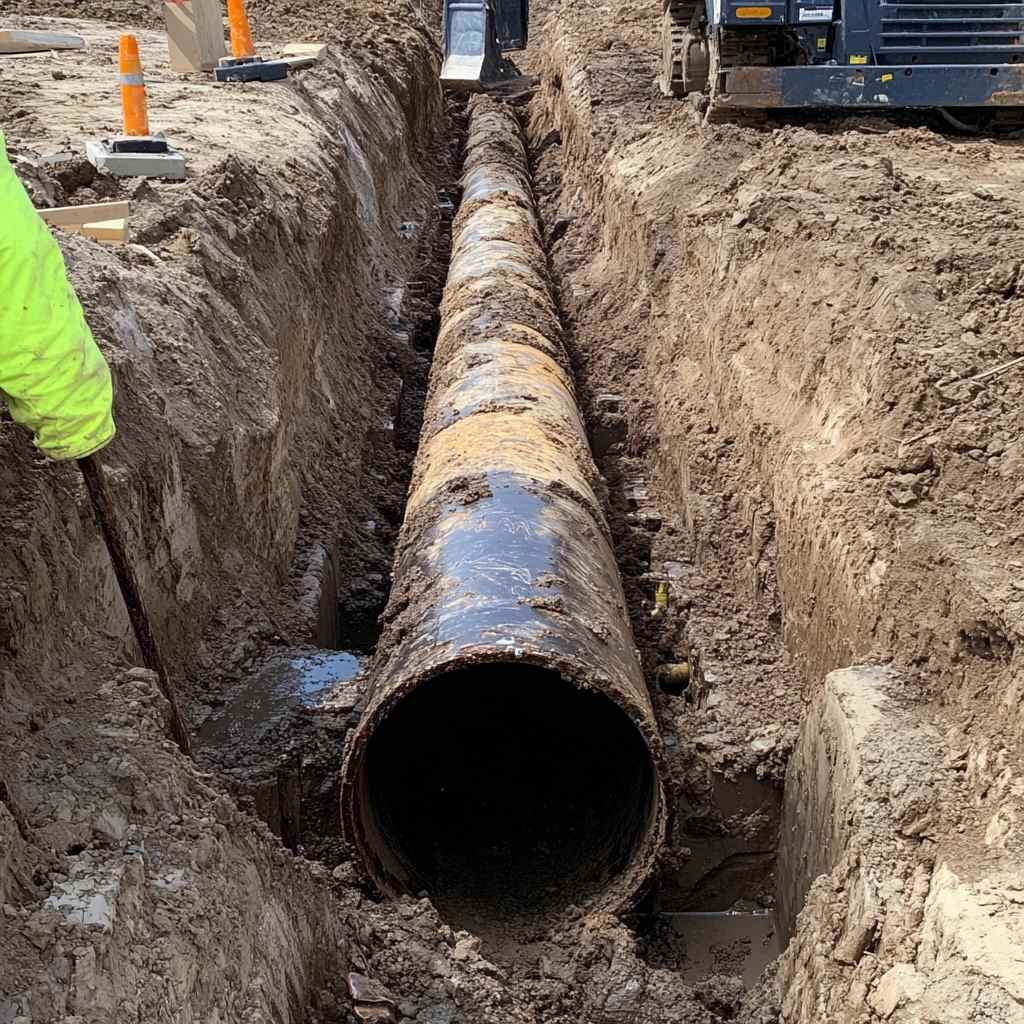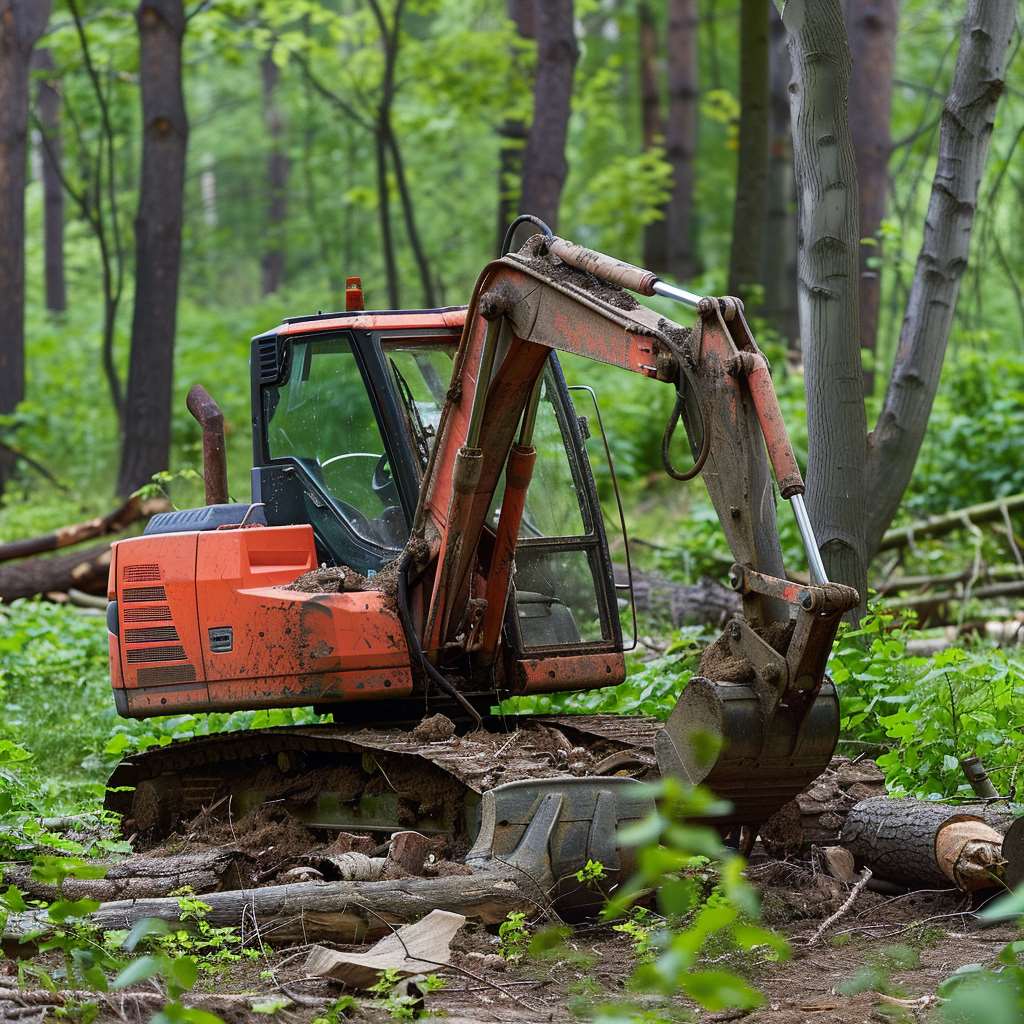Preparing a site for landscaping and hardscaping is an important step in any commercial project. Proper site preparation guarantees a stable and clean foundation for your landscape designs and hardscape installations.
With our expertise here at Indepth Excavation, you’ll have access to professional land clearing services tailored to meet the demands of your project. When done right, commercial land clearing sets the stage for beautiful and functional outdoor spaces.
Initial Site Assessment
Importance of a Thorough Site Assessment
Conducting a thorough site assessment is important before starting any commercial land clearing. A detailed assessment helps identify potential issues and obstacles that could affect the project.
Identifying Obstacles and Challenges
When you inspect the site, look for various obstacles like large rocks, tree stumps, and old structures. For instance, uncovering hidden debris or underground utilities is vital to avoid unexpected problems later.
Planning the Clearing Process
After identifying the obstacles, create a detailed plan for the clearing process. You should outline the necessary steps, equipment needed, and personnel involved. This will provide a smooth workflow that also helps in estimating the time and cost accurately.
Checklist for Initial Site Assessment
- Soil Testing: Analyze soil quality and stability.
- Topography: Note slopes and natural drainage patterns.
- Vegetation: Determine types and quantities of vegetation.
- Existing Structures: Identify any structures that need removal.
- Utilities: Locate underground utilities to avoid damage.
Consult an experienced contractor like us at Indepth Excavation, for a comprehensive site assessment.
Removing Vegetation and Debris
Clearing trees, shrubs, and underbrush is the first step in preparing a site for landscaping and hardscaping. This involves using heavy machinery to remove large trees and smaller equipment for shrubs and other vegetation.
Waste materials, including fallen trees, branches, and leaves, need to be properly managed. Typically, this involves hauling away debris or using wood chippers to process it on-site. Some organic matter can be composted or repurposed for mulching.
Grading and Leveling the Land
Grading and leveling are important steps when preparing land for landscaping and hardscaping. An even ground is needed to guarantee the success of any outdoor project. Without proper grading, water might pool in unwanted areas, leading to erosion and damage.
Several techniques are used in the grading process. These include:
- Cut and Fill: Removing soil from high spots and using it to fill low spots.
- Laser Grading: Using laser equipment to achieve precise leveling.
- Soil Compaction: Guaranteeing the soil is tightly packed to prevent future settling.
You can see these techniques often applied by companies like us here at Indepth Excavation.
Proper grading helps prevent future issues such as:
- Water Drainage Problems: Redirecting water away to protect structures and plantings.
- Erosion Control: Stabilizing the soil to keep it from washing away during heavy rains.
- Foundation Stability: Providing a solid base for patios, walkways, and other hardscape elements.
Grading involves detailed planning. A contour map is often created to understand the land’s natural slope and decide on the best approach. This means the landscape will be functional and beautiful.
In any landscaping project, the quality of grading and leveling directly affects the end result. Proper execution guarantees a stable, durable, and visually appealing environment.
Soil Preparation
Before you start landscaping, soil preparation is important . Testing the soil quality and composition helps you understand what amendments are needed. Start by:
- Testing Soil Quality: Use a soil test kit to measure pH, nutrient levels, and soil type.
- Analyzing Composition: Identify if the soil is sandy, clay, or loamy to determine its drainage capabilities.
Once you know the soil’s properties, you can amend it for optimal plant growth. Common amendments include:
- Compost: Improves soil structure and provides nutrients.
- Sand: Enhances drainage in clay soils.
- Peat Moss: Increases water retention in sandy soils.
Proper amendments means your plants have the best environment to thrive.
Preparing the soil involves several steps to ready it for various landscaping elements like lawns, garden beds, and hardscaping features.
- Removing Debris: Clear the soil of rocks, roots, and leftover construction materials.
- Tilling the Soil: Break up compacted soil to improve aeration and root penetration.
- Leveling: Make sure the ground is even to support pavers, patios, or plants.
By taking these steps, you set the stage for a healthy, vibrant landscape. Having Indepth Excavation on your side can help streamline the process, granting your soil is perfectly prepared for all your landscaping needs.
Importance of Proper Drainage
Drainage is important for both landscaping and hardscaping projects. Poor drainage can lead to water pooling, soil erosion, and damage to your property. When you invest in commercial land clearing, proper drainage makes the long-term success of your project.
Importance of Drainage for Landscaping and Hardscaping
- Standing water can damage plants, gardens, and lawns.
- Water pooling can affect the stability of driveways, patios, and walkways.
- Proper drainage prevents soil erosion and protects your investment.
Creating Effective Drainage Solutions
Indepth Excavation employs various techniques to create effective drainage solutions.
- Grading: Adjusting the slope of the land to guide water flow away from structures.
- French Drains: Installing drainage systems that capture and direct water efficiently.
- Retention Ponds: Designing low areas to temporarily hold water during heavy rains.
Preventing Water-Related Issues in the Future
- Regular Maintenance: Making sure drains, gutters, and downspouts are clear of debris.
- Landscaping Choices: Using plants that tolerate wet conditions in low-lying areas.
- Erosion Control: Installing barriers or ground cover to reduce soil movement.
By prioritizing proper drainage, you can avoid costly repairs and keep your landscaping and hardscaping looking great all year round.
Creating Access Points and Pathways
Establishing clear access points and pathways is vital in any commercial land clearing project. With Indepth Excavation, you can guarantee your site is accessible for all necessary tasks.
Creating access points involves planning routes for machinery. These routes must be wide enough for equipment and free of obstacles.
Key Steps:
- Survey the Site: Determine the best routes for equipment.
- Remove Obstacles: Clear any vegetation or debris in the way.
- Reinforce the Ground: Makes sure the ground is stable to handle heavy machinery.
Once the initial clearing is done, designing access points for future maintenance becomes important. Easy access helps in regular upkeep and can prevent larger issues.
Considerations for Future Maintenance:
- Accessibility: Make sure paths are large enough for maintenance vehicles.
- Durability: Use materials that can withstand weather and frequent use.
- Clear Signage: Mark pathways clearly to prevent accidents.
Accessibility is key in landscaping and hardscaping projects. Properly designed pathways improve aesthetics and functionality. They allow landscapers to work efficiently and enhance the overall appeal of the space.
Compliance with Regulations
Compliance with regulations is important when undertaking commercial land clearing projects.
Adherence to local regulations is more of a sidenote when you know how to navigate these channels as well as we at Indepth Excavation do.
Understanding Local and Federal Regulations
To begin, familiarize yourself with both local and federal laws. Local laws may vary significantly from one region to another, so it’s essential to visit your local government’s website or office to get the specifics.
Federal regulations are uniform and often involve environmental protection statutes like the Clean Water Act and the Endangered Species Act.
Obtaining Necessary Permits for Land Clearing
Before starting any land clearing, secure the required permits. These permits often involve environmental impact assessments. The absence of proper permits can lead to project delays or even legal actions.
Be sure to apply for these permits well in advance. Contact your local zoning office or environmental agency for guidance on which permits you need.
Compliance to Avoid Legal Issues
Failure to comply with regulations could result in substantial fines and project shutdowns. Regularly consult with legal experts and regulatory bodies to make certain you’re on track. Completing regular audits and checks can help you stay compliant.
Always keep documentation handy to prove compliance in case of inspections. For dependable and professional land clearing services, rely on Indepth Excavation to guide you through the regulatory landscape.
